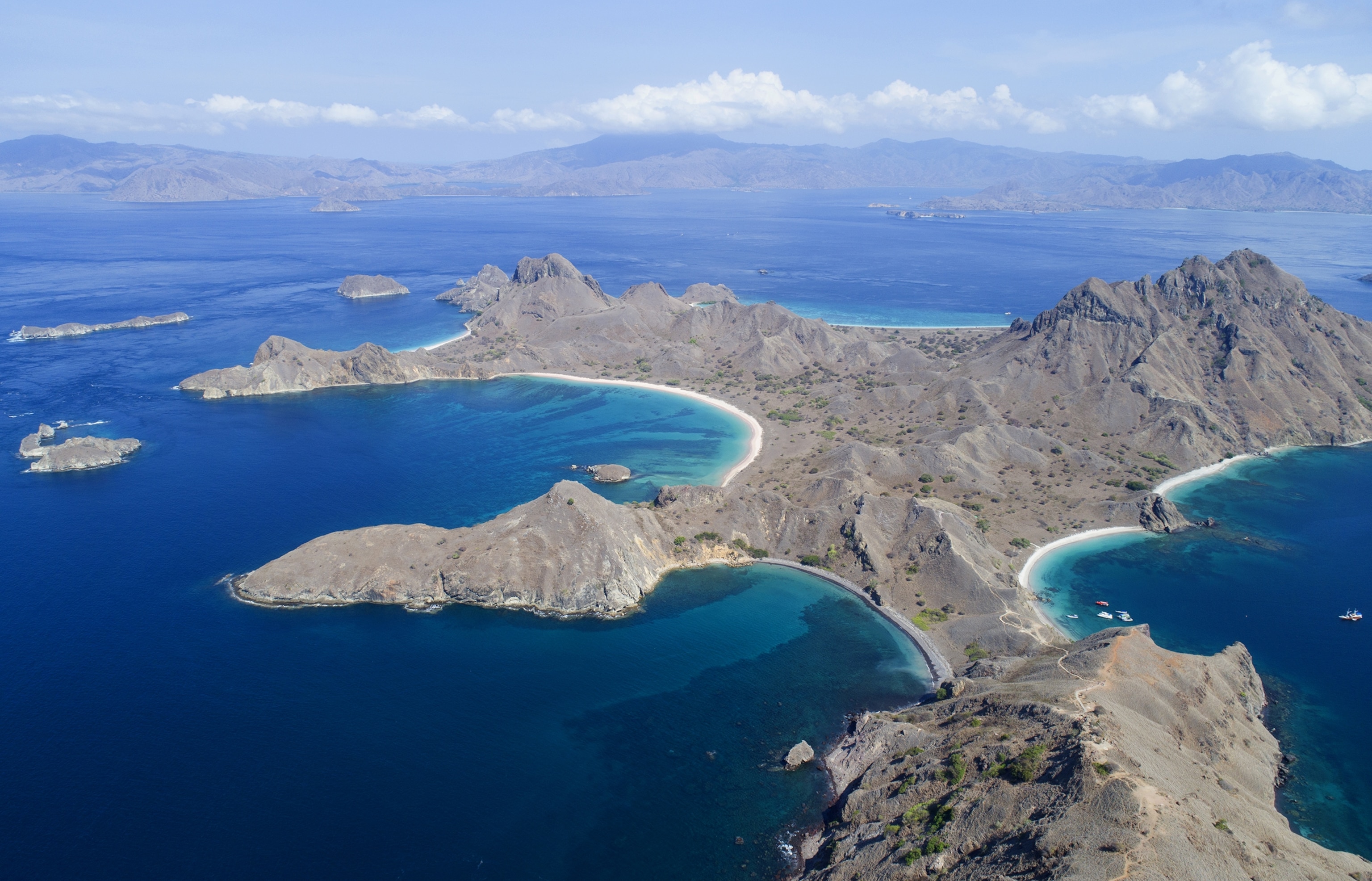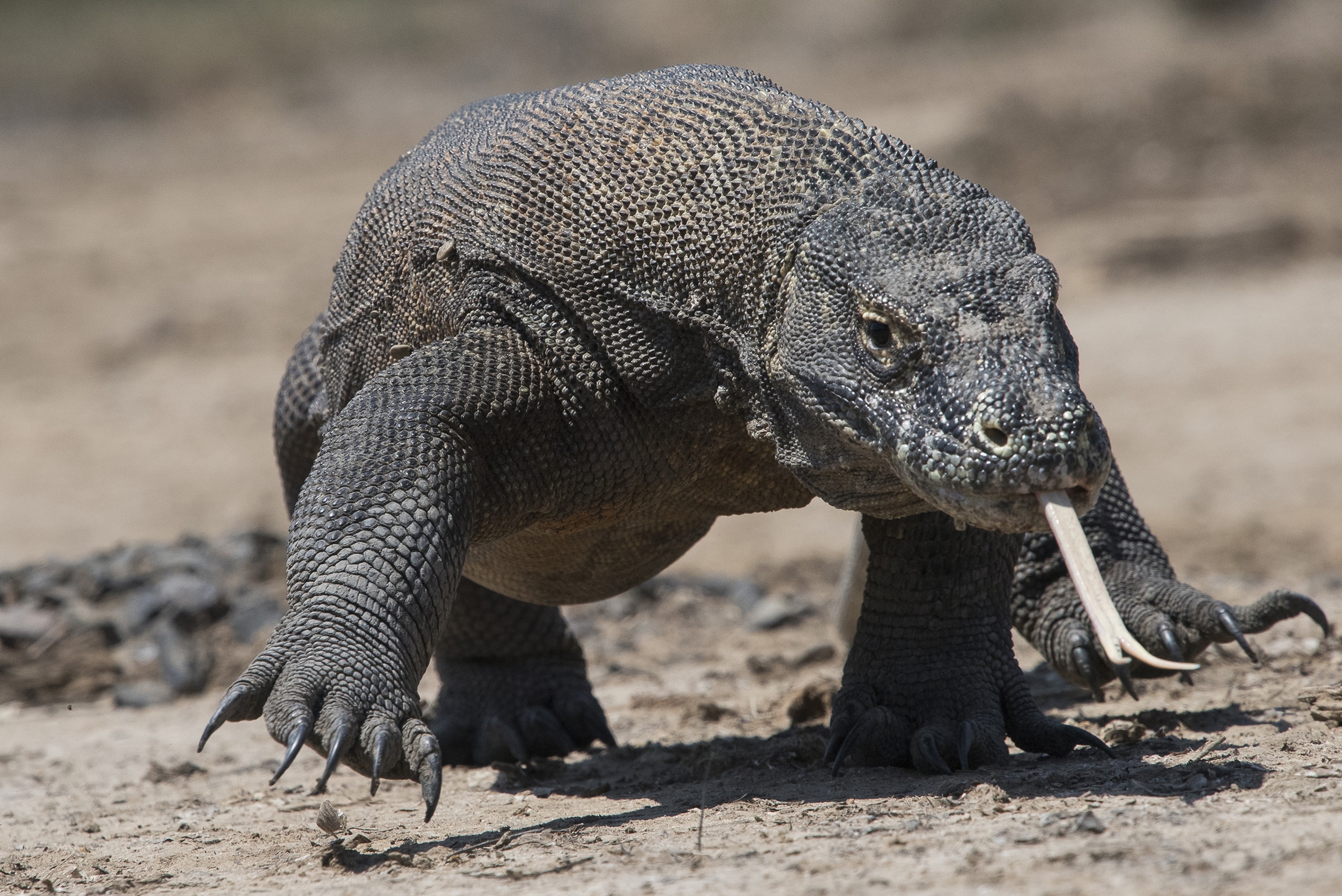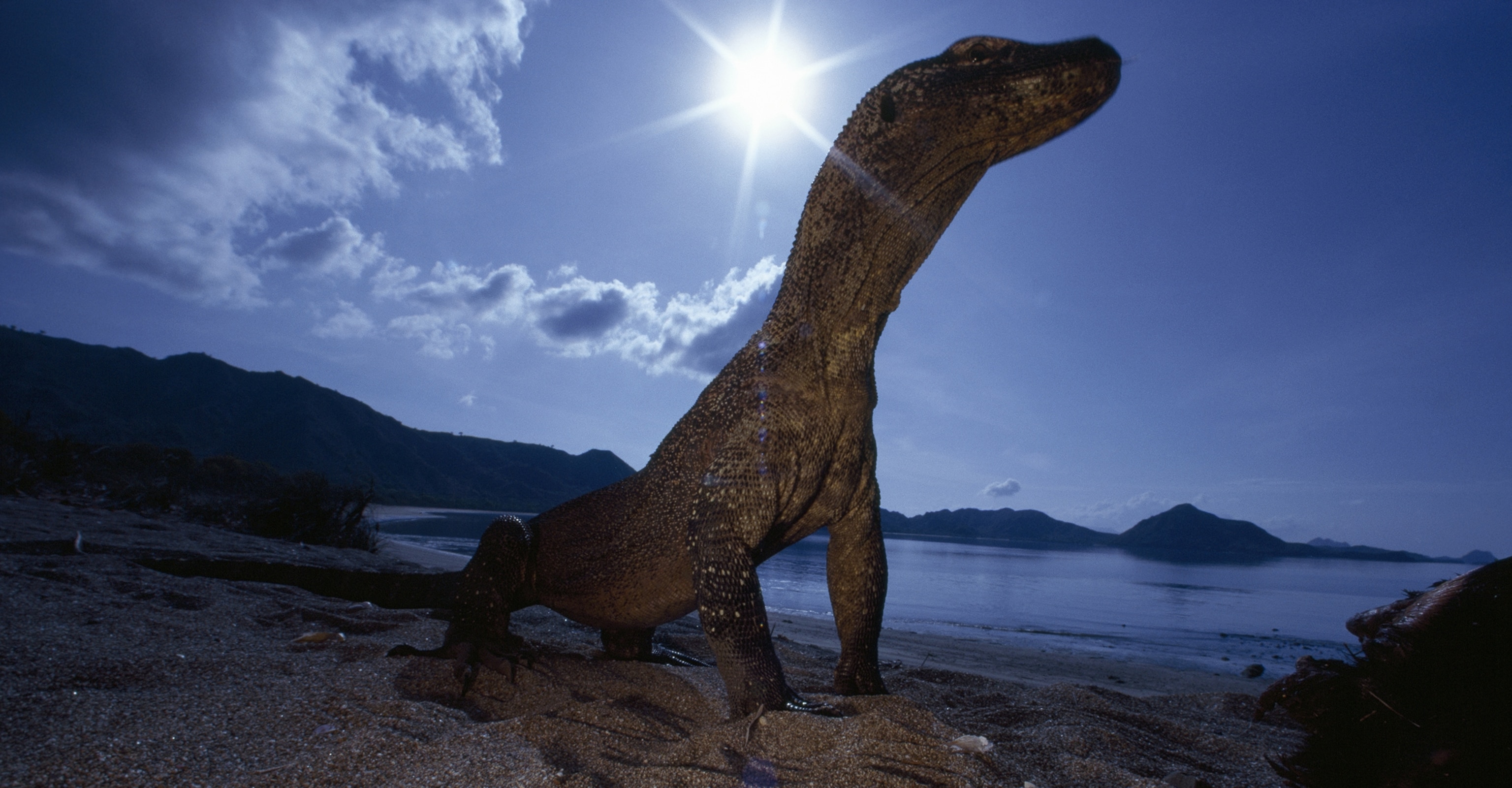“Get up, get up sir.” These words were repeated a few times as I lie on my stomach around 15 metres from a Komodo dragon on the sand as I snap the perfect photograph.
A number of them are lying in the shade and showing a genuine disinterest in a group of tourists standing a short distance away.
It’s a warm, energy sapping day and we’ve encountered the Komodo dragons after a short trek along a sandy path to a dried-up waterhole.
They are dusty and fairly content lying in the shade when I lie down for a lizard’s-eye view but one older looking Komodo takes an interest in me being at his level. He slowly rises and begins to wander over while flicking out his tongue to taste the air and my scent. The three rangers accompanying our group of 12 immediately implore me to stand up and gently nudge the lizard away with long cleft sticks.
It is a heart-pumping moment because this particular two-metre specimen is a big lad. More pointedly, the lizards have venom glands in their mouths which are loaded with toxins that lower blood pressure, prevent clotting and obviously induce shock.
As part of the tour we’re told of attacks on humans (mainly because we ask) but the lizards generally live fairly harmoniously with homo sapiens bipeds nearby.
I had arrived in the fishing town of Labuan Bajo’s gleaming new airport, on the island of Flores, the previous afternoon and was immediately made aware of the region’s primary attraction as there were large posters and motifs of Komodo dragons dotting the terminal.
Rather than head straight out to look at the lizards I spent the afternoon on a motorbike cruising the island’s hills past small farms and local markets.

It was early the next morning when I headed out to the Komodo National Park in Indonesia’s Lesser Sunda Islands between East Nusa Tenggara and West Nusa Tenggara. We would be visiting two islands as well as Komodo Island itself – home to 1226 of the large prehistoric lizards out of a population of more than 2500 in the whole park.
Speedboat arrival
We’d discovered around five of the prehistoric leviathans and the reason why they were sitting by the waterhole is it’s often a place where their favourite prey such as local deer, water buffalo and some rather nervous looking chickens come down for a drink on a hot day. On this particular day, they blend seamlessly with the sand and low-grass and lie in wait for their prey.
They’re magnificent yet frightening creatures and their home in the national park is a UNESCO World Heritage Site and proclaimed as one of the “seven new wonders of nature”.
Yet despite its status, it’s remarkably tranquil with a fairly low-key tourism presence considering it also boasts some of the world’s best and most beautiful diving and snorkelling sites.
Our day had begun with a one-hour speedboat ride from Labuan Bajo. There was an option to take a traditional phinisi out to the park but I was keen to get there as quickly as possible. Sitting on the roof of the boat I was able to take in the stunning island surrounds as we bounced over immaculately turquoise waters towards our first port of call Padar Island.
On arrival we hike up a hill which affords magnificent views over the island and the whole national park. It’s not a place teeming with wildlife as it’s surprisingly arid and covered with low-lying vegetation but the real wildlife and beauty lay beyond the bounds of the islands in the immaculately clear, turquoise surrounding sea. Diving into this water after a long hike is truly invigorating and the visibility is excellent.
Exquisite rosy beach

Sitting on the edge of the boat with mask and snorkel perched on top of my head, it is blissful to watch the sun flicker and sparkle off the water to reveal an array of different hues of blue and green.
Below the surface, the colours are even more dazzling with healthy vibrant coral, which has bountiful fish darting all around. A couple of manta rays also lazily glide past nearby.
Feeling refreshed we are back onto the boat for a supplied lunch of chicken and vegetables washed down with ice-cold water and soft drinks before we head to Pantai Merah or the “pink beach”. It’s one of only seven pink beaches on the planet and the sand’s exquisite colour is quite striking.
Run your fingers through it and it’s a pure fine pink – it’s not a light dusting of pink just lying on the surface but a deep vibrant colour still apparent as you dig deeper into the sand.
Later in the day we snorkel around Batu Bolong reef where we spy more fish as well as turtles and a few more graceful manta rays slowly circling the boat as we bob above the reef. It is a moment of pure peace and quite unlike the few heart-pounding seconds I’d endured as a Komodo dragon wandered towards me a few hours earlier.
It is a glorious end to a beautiful day of adventure and as we make our return trip to Labuan Bajo the 12 of us swap stories about the day’s highlights while we recline on the boat’s roof and breathe in the cooler evening air.



